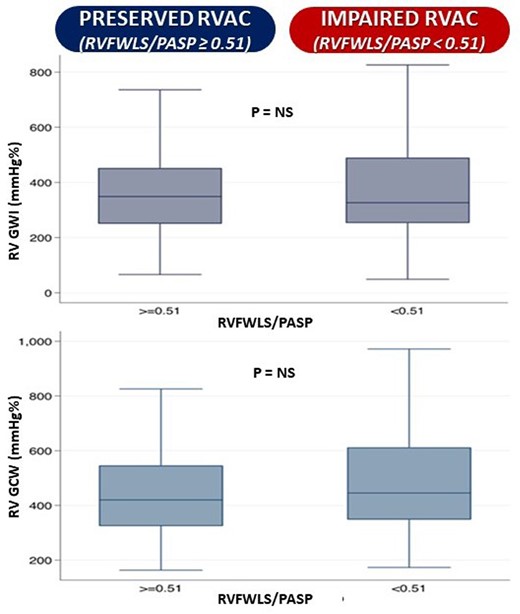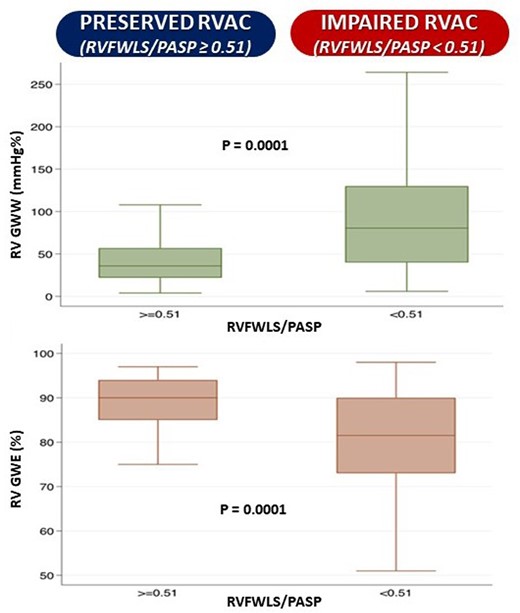-
PDF
- Split View
-
Views
-
Cite
Cite
S Sforna, F Fortuni, P Biagioli, M Maltempi, I Di Pietro, M Mascelloni, F Fedeli, G Ambrosio, E Carluccio, Right ventricular myocardial work: a step forward for the assessment of right ventricular to pulmonary artery coupling, European Heart Journal, Volume 45, Issue Supplement_1, October 2024, ehae666.039, https://doi.org/10.1093/eurheartj/ehae666.039
Close - Share Icon Share
Abstract
Right ventricular myocardial work (RVMW) is a novel method for non-invasive assessment of right ventricular (RV) function. By integrating RV global longitudinal strain as systolic function parameter, pulmonary systolic and diastolic pressures as afterload indices, and pulmonary and tricuspid valves timings, RVMW could provide a more comprehensive evaluation of RV function.
The aim of this study was to assess patterns of RVMW indices in patients with preserved and impaired RV to pulmonary artery (PA) coupling (RVAC), as assessed by RV free wall longitudinal strain/pulmonary artery systolic pressure (RVFWLS/PASP) ratio.
We studied by echocardiography 158 consecutive patients with stable HF and left ventricular (LV) systolic dysfunction (LV ejection fraction < 50%). RVAC was assessed by RVFWLS/PASP and patients were grouped according to the median value. Four parameters of RVMW were obtained: RV global work index (RVGWI), RV global constructive work (RVGCW), RV global wasted work (RVGWW) and RV global work efficiency (RVGWE).
According to RVFWLS/PASP ratio, patients were divided into two groups: A) preserved RVAC (RVFWLS/PASP ratio ≥ 0.51; N=84) and B) impaired RVAC (RVFWLS/PASP ratio < 0.51; N= 74). Both RVGWI (371±156 vs 384±207 mmHg%, P=NS) and RVGCW (449±171 vs 516±249 mmHg%, P=NS) did not significantly differ between the two groups (figure 1). However, group B (impaired RVAC) showed significantly greater RV wasted work (94±69 vs 44±30 mmHg%, P=0.0001) and significantly lower RV work efficiency (80±13 vs 88±8 %, P=0.0001) compared to group A (preserved RVAC, figure 2).


Author notes
Funding Acknowledgements: None.



